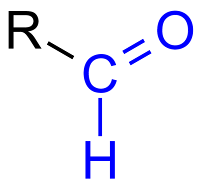Aldehydes and Ketones solved MCQs practice
(a)
Wurtz (b) Aldol (c) Cannizzaro (d)
Fehling
22.
The
example of Halo form is
(a)
Chloroform (b) Bromo form (c) Idoform (d) All of them
23. In
Pakistan, ethanol is prepared by the fermentation of
(a) Molasses (b) Starch grains (c) Fruit juices (d) All of them
24. The
residue obtained after the crystallization of sugar from conc. Sugarcane juice
is called.
(a) Enzyme (b) Starch
(c) Diastase (d)
Molasses
25.
Alcohols
can be obtained by the
_______ of alkenes.
(a) Hydrogenation (b) Hydration (c)
Halogenation (d) None of them
26. Oxidation
of alcohols convert them into
(a)
Aldehycle (b) Ketones (c) Acids
(d)
Both a & b
27. The best reagent for the oxidation of alcohol
is
(a) ZnCl2 (b) Ether (c) Acidic dichromate (d) Pyridine
28. __________
alcohols are resistant to oxidation.
(a) Primary (b) Secondary (c) Tertiary (d) Long chain
29. _________
gives iodoform with iodine in the presence of NaOH.
(a) Methanol (b) Ethanol (c)
Propanol (d) Butonol
30. Phenol reacts with acetyl chloride in the
presence of a base to form
(a) Acid (b) Alkane
(c) Aldehyde (d) Ester
31. Aqueous solution of phenol reacts with
bromine water to give precipitate of 2, 4, 6 tribromophenol.
(a) White (b) Yellow
|
(c) Blue (d) Green
|
32.
|
The IUPAC name of CH3OC6H5 is
|
(a) Methoxy methane
|
(b) Methoxy ethane
|
(c) Ethoxy propane
|
(d)
Methoxy benzene
|
33.
|
The halo
form’s reaction using iodine
|
and aqueous _______ is called the
idoform test
(a) Sod – chloride (b)
Sod – carbonate
34.
Idoform
is a ________ solid.
(a) White (b)
Black (c) Yellow
(d) Blue
35. The catalyst used for the catalytic reduction
of aldehydes and ketones.
(a) Pd (b)
Pt (c) Ni (d) All of them
36. Aldehydes
combine with alcohols in the presence of _________ gas to form acetals.
(a) Hydrogen (b)
Carbon dioxide (c) Hydrogen chloride
(d)
Chlorine
37. Aldehycles
and ketones are easily oxidized by mild oxidizing agents like.
(a) Tollen’s reagent (b)
Fehling’s solution
(c) Benedict’s solution (d) All of them
38. An alkaline solution containing a cupric
tartarate complex ion is called.
(a) Fehling’s solution
|
(b)
Benedict’s solution
|
(c) Tollen’s reagent
|
(d) DNPH
|
39.
test.
|
Aldehydes
do not give ___________
|
(a) Fehling’s
solution
|
(b) Benedict’s solution
|
(c)
Sod – nitroprusside
|
(d) I do form
|
40.
of antipoliovaccine.
(a)
Formaldehyde
|
_________ is used in the processing
|
(b)
Acetaldehyde
|
(c) Ether
(d) Propanone
|


No comments:
Post a Comment
Feel free to comment.Team NUST is here to listen you.